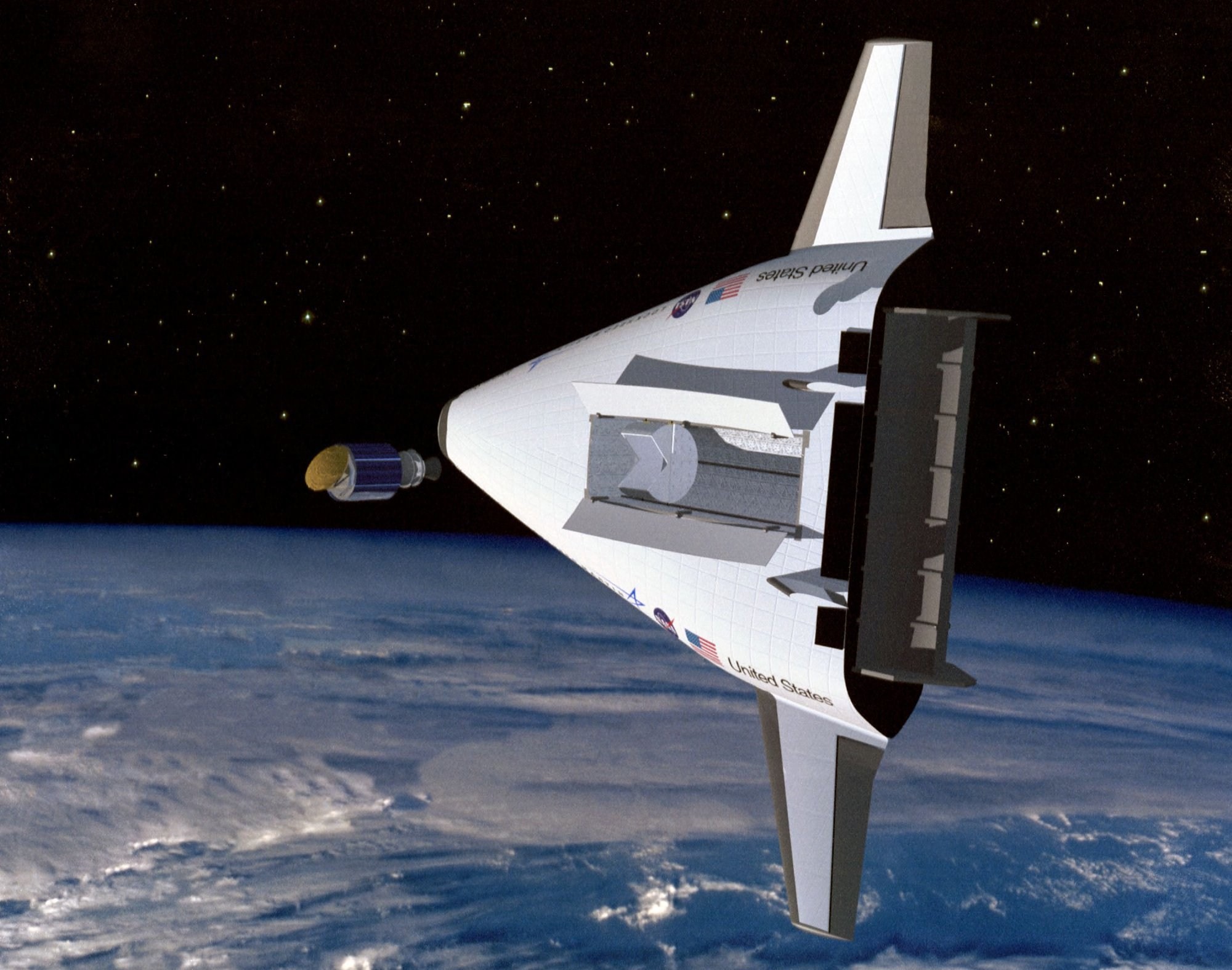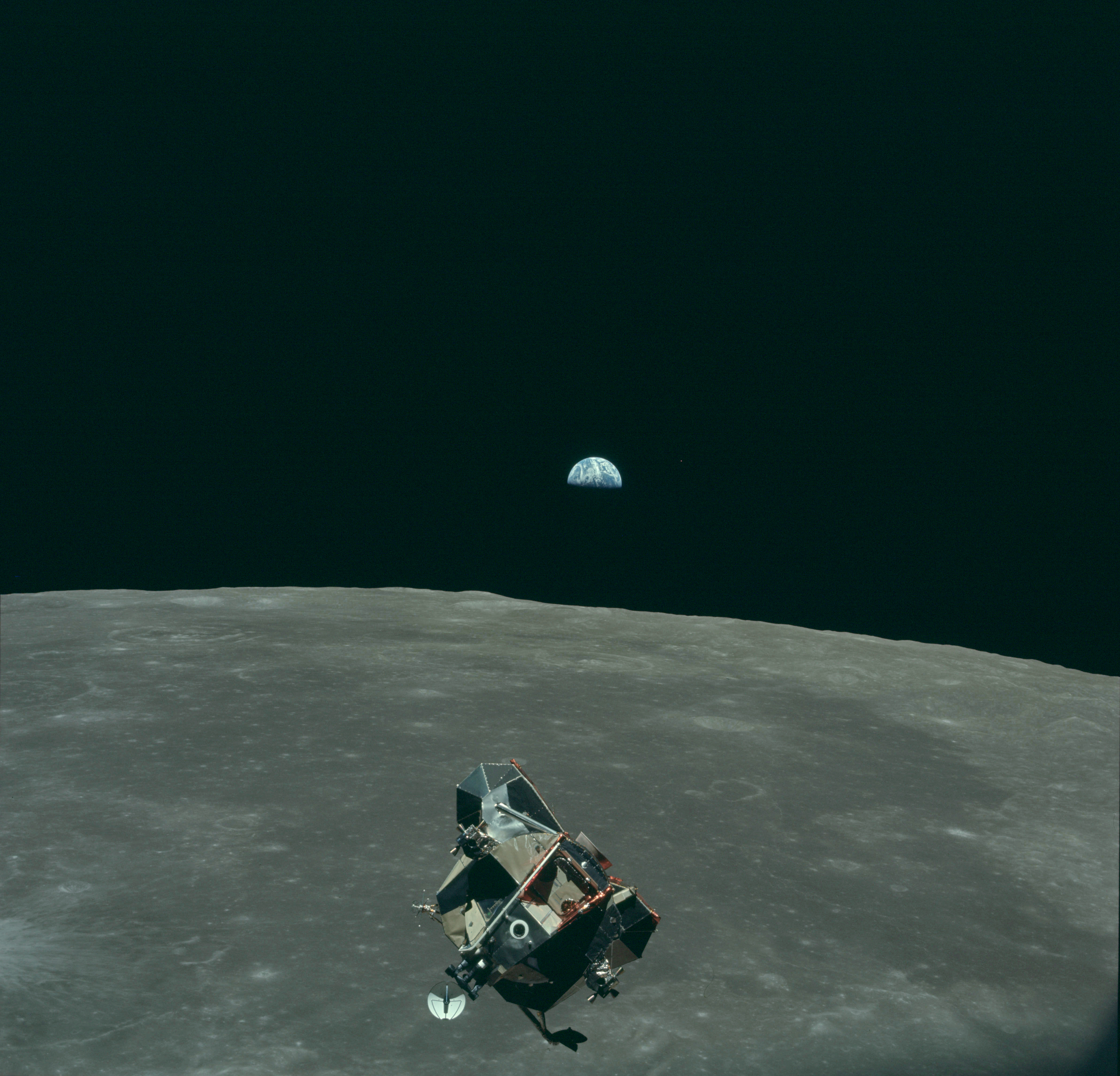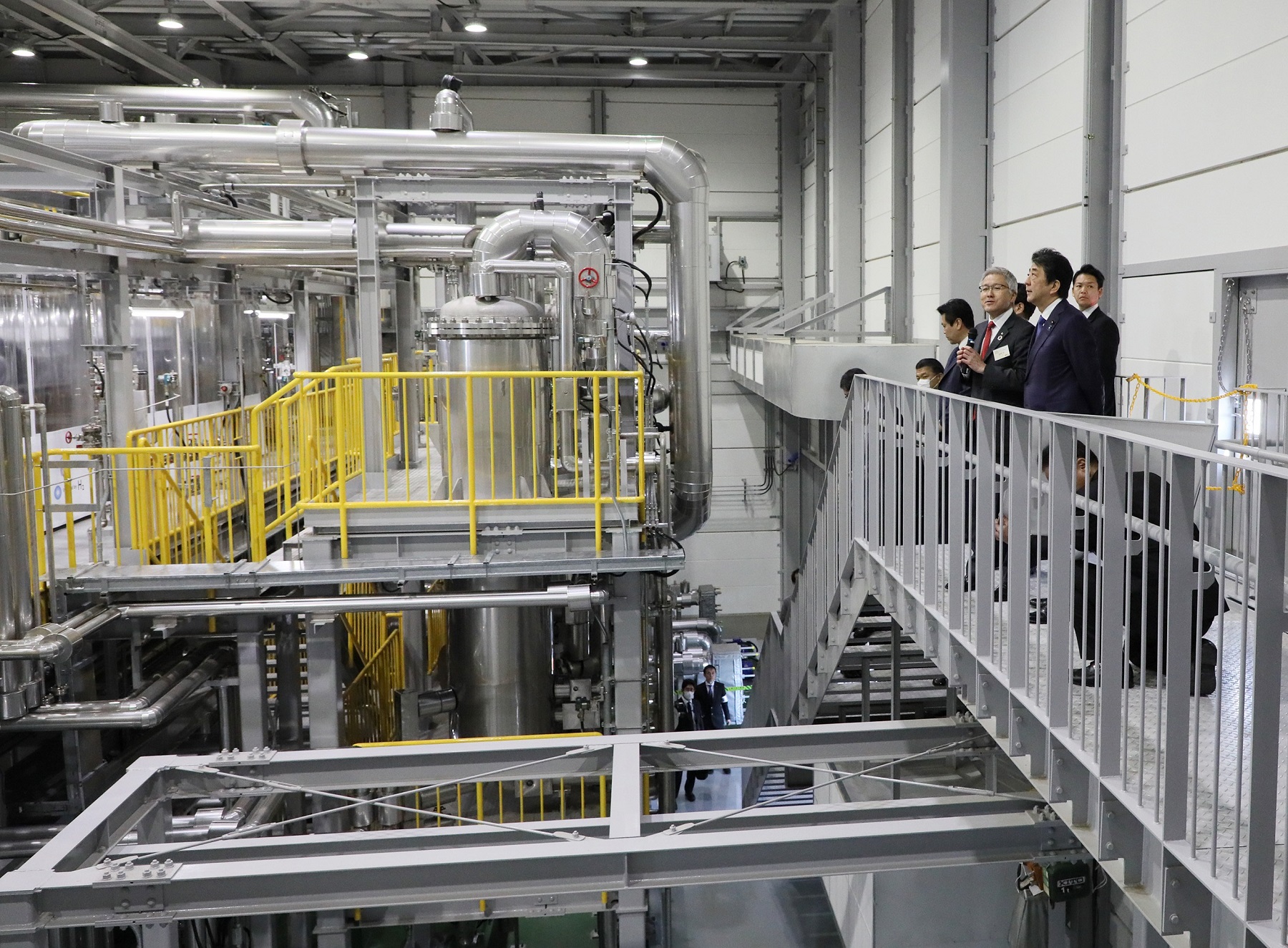|
Single-stage To Orbit
A single-stage-to-orbit (SSTO) vehicle reaches orbit from the surface of a body using only propellants and fluids and without expending tanks, engines, or other major hardware. The term usually, but not exclusively, refers to reusable vehicles. To date, no Earth-launched SSTO launch vehicles have ever been flown; orbital launches from Earth have been performed by either fully or partially expendable multi-stage rockets. The main projected advantage of the SSTO concept is elimination of the hardware replacement inherent in expendable launch systems. However, the non-recurring costs associated with design, development, research and engineering (DDR&E) of reusable SSTO systems are much higher than expendable systems due to the substantial technical challenges of SSTO, assuming that those technical issues can in fact be solved. SSTO vehicles may also require a significantly higher degree of regular maintenance. It is considered to be marginally possible to launch a single-stage- ... [...More Info...] [...Related Items...] OR: [Wikipedia] [Google] [Baidu] |
Apollo Lunar Module
The Apollo Lunar Module (LM ), originally designated the Lunar Excursion Module (LEM), was the lunar lander spacecraft that was flown between lunar orbit and the Moon's surface during the United States' Apollo program. It was the first crewed spacecraft to operate exclusively in the airless vacuum of space, and remains the only crewed vehicle to land anywhere beyond Earth. Structurally and aerodynamically incapable of flight through Earth's atmosphere, the two-stage lunar module was ferried to lunar orbit attached to the Apollo command and service module (CSM), about twice its mass. Its crew of two flew the complete lunar module from lunar orbit to the Moon's surface. During takeoff, the spent descent stage was used as a launch pad for the ascent stage which then flew back to the command module, after which it was also discarded. Overseen by Grumman, the LM's development was plagued with problems that delayed its first uncrewed flight by about ten months and its first crewed ... [...More Info...] [...Related Items...] OR: [Wikipedia] [Google] [Baidu] |
Douglas SASSTO
Douglas Aircraft's SASSTO, short for "Saturn Application Single Stage to Orbit", was a single-stage-to-orbit (SSTO) reusable launch system designed by Philip Bono's team in 1967. SASSTO was a study in minimalist designs, a launcher with the specific intent of repeatedly placing a Gemini capsule in orbit for the lowest possible cost. The SASSTO booster was based on the layout of the S-IVB upper stage from the Saturn family, modified with a plug nozzle. Although the SASSTO design was never followed up at Douglas, it is widely referred to in newer studies for SSTO launchers, notably the MBB "Beta" (Ballistisches Einstufiges Träger-Aggregat) design, which was largely an updated version of SASSTO. History In 1962 NASA sent out a series of studies on post-Apollo launch needs, which generally assumed very large launchers for a manned mission to Mars. At Douglas, makers of the S-IVB, Philip Bono led a team that studied a number of very large liquid-fueled boosters as a way to lower the ... [...More Info...] [...Related Items...] OR: [Wikipedia] [Google] [Baidu] |
Hydrogen Fuel
Hydrogen fuel refers to hydrogen which is burned as fuel with oxygen. It is zero-carbon, provided that it is created in a process that does not involve carbon. It can be used in fuel cells or internal combustion engines (see HICEV). Regarding hydrogen vehicles, hydrogen has begun to be used in commercial fuel cell vehicles such as passenger cars, and has been used in fuel cell buses for many years. It is also used as a fuel for spacecraft propulsion and is being proposed for hydrogen-powered aircraft. Production Because pure hydrogen does not occur naturally on Earth in large quantities, it usually requires a primary energy input to be produced on an industrial scale. Hydrogen fuel can be produced from methane or by electrolysis of water. As of 2020, the majority of hydrogen (∼95%) is produced from fossil fuels by steam reforming or partial oxidation of methane and coal gasification with only a small quantity by other routes such as biomass gasification or electrolysis of water. ... [...More Info...] [...Related Items...] OR: [Wikipedia] [Google] [Baidu] |
Hydrocarbon Fuel
Hydrocarbon fuel is fuel that consists mostly of hydrocarbons. It may refer to: * Fossil fuel, derived from coal, oil, or natural gas * Biofuel, derived from plant or animal matter * Synthetic fuel, derived from synthesis gas * Electrofuel, derived from carbon dioxide * Peat Peat (), also known as turf (), is an accumulation of partially decayed vegetation or organic matter. It is unique to natural areas called peatlands, bogs, mires, moors, or muskegs. The peatland ecosystem covers and is the most efficien ..., naturally occurring carbon-rich build up of vegetation {{SIA Fuels Hydrocarbons ... [...More Info...] [...Related Items...] OR: [Wikipedia] [Google] [Baidu] |
Spaceplane
A spaceplane is a vehicle that can fly and glide like an aircraft in Earth's atmosphere and maneuver like a spacecraft in outer space. To do so, spaceplanes must incorporate features of both aircraft and spacecraft. Orbital spaceplanes tend to be more similar to conventional spacecraft, while sub-orbital spaceplanes tend to be more similar to fixed-wing aircraft. All spaceplanes to date have been rocket-powered but then landed as unpowered gliders. Four types of spaceplanes have successfully launched to orbit, reentered Earth's atmosphere, and landed: the U.S. Space Shuttle, Russian Buran, U.S. X-37, and the Chinese CSSHQ. Another, Dream Chaser, is under development in the U.S. As of 2019 all past, current, and planned orbital vehicles launch vertically on a separate rocket. Orbital spaceflight takes place at high velocities, with orbital kinetic energies typically at least 50 times greater than suborbital trajectories. Consequently, heavy heat shielding is required ... [...More Info...] [...Related Items...] OR: [Wikipedia] [Google] [Baidu] |
North American Air Augmented VTOVL
North is one of the four compass points or cardinal directions. It is the opposite of south and is perpendicular to east and west. ''North'' is a noun, adjective, or adverb indicating direction or geography. Etymology The word ''north'' is related to the Old High German ''nord'', both descending from the Proto-Indo-European unit *''ner-'', meaning "left; below" as north is to left when facing the rising sun. Similarly, the other cardinal directions are also related to the sun's position. The Latin word ''borealis'' comes from the Greek '' boreas'' "north wind, north", which, according to Ovid, was personified as the wind-god Boreas, the father of Calais and Zetes. ''Septentrionalis'' is from ''septentriones'', "the seven plow oxen", a name of ''Ursa Major''. The Greek ἀρκτικός (''arktikós'') is named for the same constellation, and is the source of the English word ''Arctic''. Other languages have other derivations. For example, in Lezgian, ''kefer'' can mean b ... [...More Info...] [...Related Items...] OR: [Wikipedia] [Google] [Baidu] |
Mars
Mars is the fourth planet from the Sun and the second-smallest planet in the Solar System, only being larger than Mercury (planet), Mercury. In the English language, Mars is named for the Mars (mythology), Roman god of war. Mars is a terrestrial planet with a thin atmosphere (less than 1% that of Earth's), and has a crust primarily composed of elements similar to Earth's crust, as well as a core made of iron and nickel. Mars has surface features such as impact craters, valleys, dunes and polar ice caps. It has two small and irregularly shaped moons, Phobos (moon), Phobos and Deimos (moon), Deimos. Some of the most notable surface features on Mars include Olympus Mons, the largest volcano and List of tallest mountains in the Solar System, highest known mountain in the Solar System and Valles Marineris, one of the largest canyons in the Solar System. The North Polar Basin (Mars), Borealis basin in the Northern Hemisphere covers approximately 40% of the planet and may be a la ... [...More Info...] [...Related Items...] OR: [Wikipedia] [Google] [Baidu] |
Krafft Arnold Ehricke
Krafft Arnold Ehricke (March 24, 1917 – December 11, 1984) was a German rocket-propulsion engineer and advocate for space colonization. Biography Born in Berlin, Ehricke believed in the feasibility of space travel from a very young age, influenced by his viewing of the Fritz Lang film ''Woman in the Moon''. At the age of 12, he formed his own rocket society. He attended Technical University of Berlin and studied celestial mechanics and nuclear physics under physicists including Hans Geiger and Werner Heisenberg, attaining his degree in Aeronautical Engineering. He worked at Peenemünde as a propulsion engineer from 1942 to 1945 with Walter Thiel, then went to the United States with other German rocket scientists and technicians under "Operation Paperclip" in 1947. He worked for a short time with the Von Braun Rocket Team at Huntsville. In 1948, while working for the U.S. Army, Ehricke wrote a story about a crewed mission to Mars called "Expedition Ares". It anticipate ... [...More Info...] [...Related Items...] OR: [Wikipedia] [Google] [Baidu] |
NEXUS (rocket)
The NEXUS reusable rocket was a concept design created in the 1960s by a group at General Dynamics led by Krafft Arnold Ehricke. It was intended as the next leap beyond the Saturn V, carrying up to eight times more payload. Several versions were designed, including 12,000 and 24,000 short ton vehicles with payloads of one thousand and two thousand short tons respectively. The larger version had a diameter of 202 feet (61.5 metres). It was never built. It was a single-stage-to-orbit vehicle that would be fully recoverable upon landing in the ocean. It would use parachutes to slow descent, with retrorockets (on top) for a final soft touchdown. Notes External linksrefs "Astronautics, January 1963, pp. 50-56." re Nexus Space launch vehi ... [...More Info...] [...Related Items...] OR: [Wikipedia] [Google] [Baidu] |
Douglas Aircraft Company
The Douglas Aircraft Company was an American aerospace manufacturer based in Southern California. It was founded in 1921 by Donald Wills Douglas Sr. and later merged with McDonnell Aircraft in 1967 to form McDonnell Douglas; it then operated as a division of McDonnell Douglas. McDonnell Douglas later merged with Boeing in 1997. History 1920s The company was founded as the Douglas Company by Donald Wills Douglas Sr. on July 22, 1921 in Santa Monica, California, following dissolution of the Davis-Douglas Company. An early claim to fame was the first circumnavigation of the world by air in Douglas airplanes in 1924. In 1923, the U.S. Army Air Service was interested in carrying out a mission to circumnavigate the Earth for the first time by aircraft, a program called "World Flight". Donald Douglas proposed a modified Douglas DT to meet the Army's needs. The two-place, open cockpit DT biplane torpedo bomber had previously been produced for the U.S. Navy.Rumerman, Judy. "The Dougla ... [...More Info...] [...Related Items...] OR: [Wikipedia] [Google] [Baidu] |
Philip Bono
Philip Bono (13 January 1921 – 23 May 1993) was a Douglas Aircraft Company engineer. He was a pioneer of reusable launch system, reusable vertical landing single-stage to orbit launch vehicles. As a visionary designer, he is credited with inventing the first version of a recoverable single-stage spacecraft booster, and his contributions influenced spacecraft design. Bono pursued single-stage space launch as simpler and cheaper. He realized to do this he would need to use high specific impulse liquid hydrogen/liquid oxygen rocket engines. Afterwards he proposed to make these vehicles reusable. From his ROOST design onwards Bono advocated space launch vehicles without wings, usually using rocket assisted vertical takeoff and landing (VTVL). According to his estimates, wings consisted mostly of dead weight that decreased launch payload mass. He patented a reusable plug nozzle rocket engine which had dual use as a heat shield for atmospheric reentry. His early 1960s concepts infl ... [...More Info...] [...Related Items...] OR: [Wikipedia] [Google] [Baidu] |





